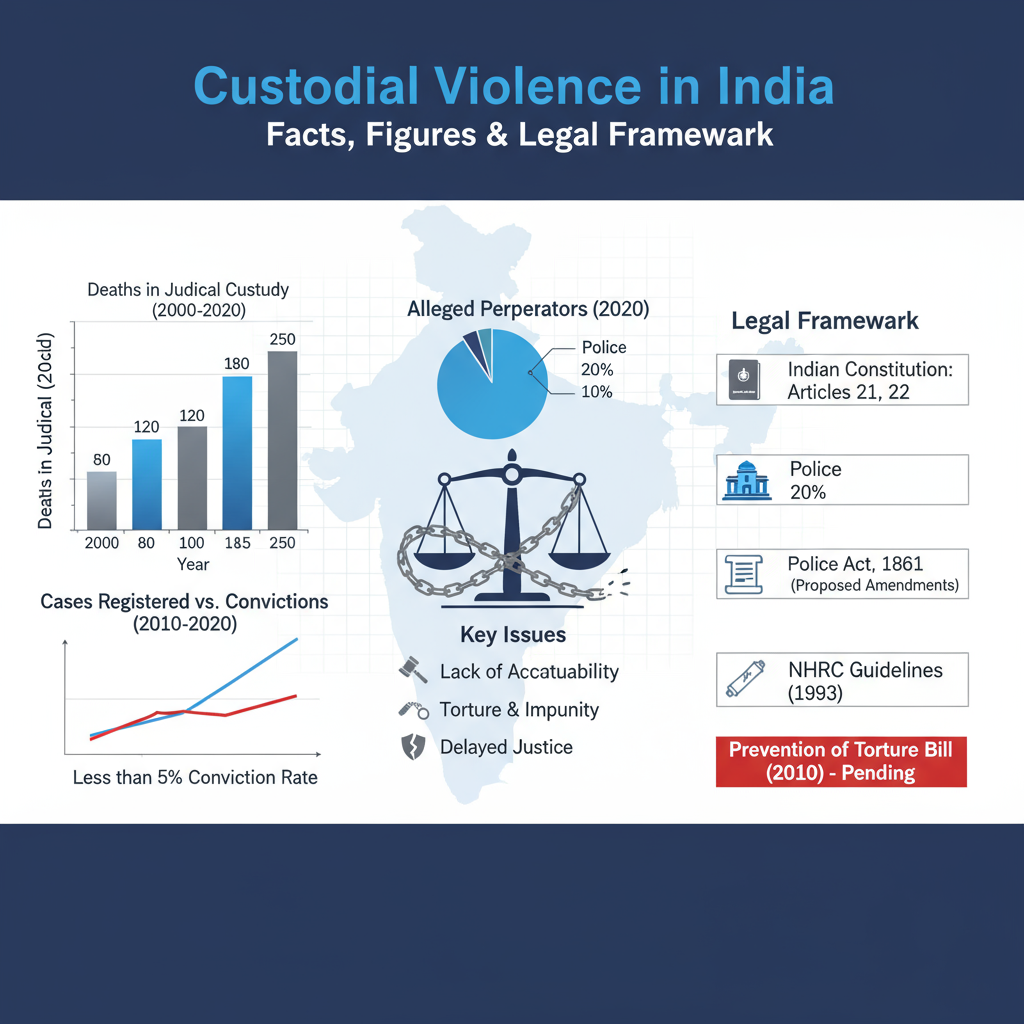Published On: October 29th 2025
Authored By: Aparna Singh
City Law College, Lucknow University
Abstract
Surrogacy has become a vital reproductive option for couples and individuals facing infertility, yet it presents multifaceted legal, social, and ethical dilemmas. This article traces the historical roots of surrogacy, including its presence in Indian mythology, to the emergence of India as the global hub for commercial surrogacy in the early 2000s. Landmark cases such as Baby Manji Yamada v. Union of India and John Balaz v. Anand Municipality illustrate the complex challenges of parentage, citizenship, and women’s vulnerability in unregulated practices. The article analyzes different forms of surrogacy—traditional and gestational, commercial and altruistic—while weighing the benefits and risks of the practice. Particular focus is given to the Surrogacy (Regulation) Act, 2021, which prohibits commercial surrogacy but permits altruistic arrangements under stringent conditions. While commendable for safeguarding surrogate mothers and children, the Act has been critiqued for being overly restrictive, excluding LGBTQ+ persons and single parents, and limiting reproductive autonomy under Article 21 of the Constitution. A brief comparative study with global practices highlights the scope for more balanced regulation. The article concludes that regulated commercial surrogacy with safeguards, fair compensation, and inclusivity offers the best path forward, ensuring dignity, justice, and compassion in reproductive practices.
-
Introduction: Understanding Surrogacy
The concept of surrogacy finds its roots in the Latin word surrogatus, meaning “substitute,” denoting a person appointed to act in place of another. Black’s Law Dictionary defines surrogacy as “the process of carrying and delivering a child for another person.” The Indian judiciary has also clarified its contours. In K. Kalaiselvi v. Chennai Port Trust, the court described surrogacy as an arrangement in which a woman agrees to carry and deliver a child she will not raise but hand over to another party.
Globally, surrogacy has provided hope to individuals and couples unable to conceive due to infertility, age, or medical conditions. Yet, it simultaneously generates serious questions: does it commodify women’s bodies, does it adequately protect children and surrogate mothers, and to what extent should the state intervene through prohibition or regulation?
-
Surrogacy in Indian Culture and Mythology
Though often perceived as a modern practice, surrogacy has parallels in ancient Indian traditions. For example:
- In the Mahabharata, Mata Kunti gave birth to children through divine intervention, bypassing sexual intercourse.
- Lord Balaram, elder brother of Krishna, was transferred from Devaki’s womb to Rohini’s womb, symbolizing gestational surrogacy.
These stories underscore that the idea of birth beyond conventional conception has long existed in Indian imagination. With scientific advancements, particularly in assisted reproductive technologies (ART), these concepts re-emerged in contemporary forms.
-
India as the Surrogacy Capital of the World
From the early 2000s, India became a hub for commercial surrogacy, often termed “baby tourism.” Foreign couples flocked to India due to relatively low costs, availability of surrogate mothers, and absence of stringent laws. Clinics offering “surrogacy packages” proliferated, contributing to a billion-dollar industry.
However, rapid commercialization led to significant concerns. Reports of exploitation of poor women, commodification of motherhood, and unethical practices such as abandonment of children or trafficking surfaced. International criticism also mounted, painting India as a destination where vulnerable women’s bodies could be rented for reproduction.
-
Judicial Approach: Landmark Cases on Surrogacy
4.1 Baby Manji Yamada v. Union of India
This 2008 case involved a Japanese couple who commissioned a surrogate in India. The couple divorced before the child’s birth, leaving questions of custody and parentage unresolved. The Supreme Court permitted the child’s grandmother to take custody, but the case exposed glaring legal voids concerning citizenship, guardianship, and the rights of surrogate-born children.
4.2 John Balaz v. Anand Municipality (2009)
In this Gujarat High Court case, German parents commissioned surrogacy in India but faced difficulties obtaining Indian passports for the twins. The Court granted them Indian citizenship, yet the matter raised international legal complexities about nationality and parentage.
These cases illustrated the pressing need for legislative intervention to provide clarity on citizenship, guardianship, and the legal status of surrogate arrangements.
-
Types of Surrogacies
5.1 Biological Classification
- Traditional Surrogacy: The surrogate is both genetic and gestational mother, as her egg is fertilized with the intended father’s sperm.
- Gestational Surrogacy: The surrogate carries an embryo created through IVF, with no genetic link to the child.
5.2 Economic Classification
- Commercial Surrogacy: The surrogate receives compensation beyond medical expenses. This was the dominant model in India until its prohibition.
- Altruistic Surrogacy: The surrogate is compensated only for medical expenses and insurance coverage. This is the only model permitted under the 2021 Act.
-
Benefits of Surrogacy
Surrogacy is a boon for couples or individuals unable to conceive naturally. It enables intended parents, especially in gestational surrogacy, to have a biological connection with the child. Surrogates, in regulated systems, receive medical care, insurance, and financial support during pregnancy. For many, it represents both a medical solution and an act of compassion bridging the gap between childlessness and parenthood.
-
Exploitation and Ethical Concerns
The most pressing critique of unregulated surrogacy is the vulnerability of surrogate mothers. Most women who entered into contracts came from marginalized or economically weaker sections. Lacking bargaining power, they were exposed to exploitation, coercion, and inadequate healthcare.
Unregulated surrogacy also gave rise to darker consequences: reports linked surrogacy networks to child trafficking, abandonment, and misuse by organized gangs. Ethical concerns about treating women’s bodies as commodities, reducing motherhood to a service, and the welfare of children dominated public discourse.
-
Legal Gaps in India’s Regulatory Framework
Before 2021, India relied on guidelines rather than binding law to regulate surrogacy. This left major gaps in addressing:
- Rights and protection of surrogate mothers
- Citizenship and parentage of surrogate-born children
- Ethical regulation of clinics and intermediaries
With advancements in ART, new questions emerged, including the permissible age for parenthood. For instance, in 2023, singer Sidhu Moosewala’s mother gave birth through IVF at age 58, raising debates about medical ethics, child welfare, and reproductive autonomy.
-
The Surrogacy (Regulation) Act, 2021
Enforced from 25 January 2022, the Act marked India’s shift toward stringent control of surrogacy.
Objectives:
- Prevent exploitation of women and children
- Regulate clinics and intermediaries
- Prohibit commercial surrogacy and child trafficking
Key Provisions:
- Commercial surrogacy banned; only altruistic surrogacy allowed
- Surrogate mothers entitled only to medical expenses and insurance
- Intended parents must be married heterosexual couples; LGBTQ+, single persons, and live-in partners excluded
- Age limits for intended parents and surrogate mothers prescribed
- Penalties for violations, including imprisonment and fines
Criticisms:
While protective in intent, the Act has been criticized for being excessively restrictive. By excluding LGBTQ+ persons and single parents, it reinforces heteronormative family structures and undermines the constitutional right to reproductive autonomy under Article 21. Moreover, denying fair compensation to surrogate mothers under altruistic arrangements raises concerns about economic justice.
-
Comparative Global Perspectives
Globally, approaches to surrogacy vary:
- United States: Some states allow commercial surrogacy with strict contracts and judicial oversight.
- United Kingdom: Commercial surrogacy is banned; only altruistic surrogacy is legal.
- Ukraine and Georgia: Permit commercial surrogacy and have become hubs for international surrogacy.
- France and Germany: Surrogacy is entirely prohibited.
India’s approach aligns with restrictive jurisdictions but contrasts with countries that regulate commercial surrogacy through enforceable contracts, thereby balancing protection with reproductive choice.
-
Constitutional and Human Rights Dimension
The right to make reproductive choices is recognized as part of personal liberty under Article 21 of the Indian Constitution (Suchita Srivastava v. Chandigarh Administration, 2009). Surrogacy, as an extension of reproductive choice, falls within this ambit. Further, Article 14 guarantees equality, raising concerns over the exclusion of LGBTQ+ persons and single individuals from the ambit of surrogacy. International human rights frameworks, including the Universal Declaration of Human Rights, emphasize the right to found a family without discrimination.
Thus, while the Act protects against exploitation, it arguably infringes upon reproductive autonomy and equality.
-
Conclusion
India’s surrogacy journey—from mythology to global surrogacy hub, from judicial dilemmas to statutory regulation—reflects the complex interplay of reproductive rights, ethics, and state control. The Surrogacy (Regulation) Act, 2021 is commendable for addressing child welfare and exploitation but risks overregulation by denying reproductive autonomy and inclusivity.
A middle path lies in regulated commercial surrogacy:
- Establish strict eligibility and health safeguards
- Provide fair compensation to surrogate mothers
- Recognize diverse family forms, including LGBTQ+ and single parents
- Ensure transparency and accountability of clinics
Such an approach would protect women from exploitation while respecting the fundamental rights of individuals. Only then can surrogacy evolve from a contested practice into one rooted in dignity, compassion, and justice.
References
- Baby Manji Yamada v. Union of India, (2008) 13 S.C.C. 518 (India).
- John Balaz v. Anand Municipality, Special Civil Application No. 3020 of 2008, (Guj. H.C. 2009).
- K. Kalaiselvi v. Chennai Port Trust, (2013) 6 M.L.J. 359 (Mad.).
- The Surrogacy (Regulation) Act, No. 47 of 2021, INDIA CODE.
- World Health Organization, Global Surrogacy Practices and Ethical Considerations (2021), https://www.who.int/.
- India Bans Commercial Surrogacy, AL JAZEERA (Dec. 19, 2021), https://www.aljazeera.com/news/2021/12/19/india-bans-commercial-surrogacy.
- Explained: The Surrogacy (Regulation) Act, 2021, THE HINDU (Jan. 2022), https://www.thehindu.com/news/national/explained-the-surrogacy-regulation-act-2021/article38300216.ece.
- India’s Surrogacy Law and Its Gaps, THE INDIAN EXPRESS (Feb. 2022), https://indianexpress.com/article/explained/india-surrogacy-law-explained-7775218/.
- Prabha Kotiswaran, Surrogacy in India: Towards a New Regulatory Framework, 17 J. INDIAN L. & SOC’Y 45 (2019).
- Ranjit Singh, Ethics of Commercial Surrogacy in India: Balancing Rights and Exploitation, 12 INT’L J. LEGAL STUD. 112 (2020).
- Suchita Srivastava v. Chandigarh Admin., (2009) 9 S.C.C. 1 (India).




